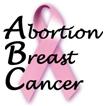Kahlenborn Letter
Bias in the Abortion-Breast Cancer Debate
By Chris Kahlenborn, MD
Beral et al make a number of claims in their recent collaborative reanalysis of the abortion-breast cancer studies. 1 Their main argument is that one cannot trust retrospective studies in this field since they are subject to recall bias. They propose that we heed the results of prospective studies instead. A careful analysis of their paper, however, reveals a failure to accurately portray the world's literature on this subject.
The author's premise, namely that women with breast cancer will be more honest about their abortion history than women without breast cancer, is based mainly on a Swedish case-control study which claimed that cases were 50% more honest about their abortion history than controls. 2 Reanalysis of that study's data by another author showed only a 16% recall bias effect. 3 But even if recall bias were a real phenomenon, the Swedish study cannot be credibly referenced since 27% (7/26) of cases who stated that they had an abortion, reportedly did not have one, according to the national register (supposedly the gold standard). How can Beral and the dozens of other cosigners seriously continue to cite this study as their best evidence?
The only study which has properly examined the question of recall bias is the cohort study from Shanghai which also performed a case-control analysis on its patients. 4 Ye et al found a 1.06 (95% 0.91-1.25) risk of breast cancer in its cohort study but when they interviewed these same cases in a retrospective fashion they found exactly the same risk: 1.06 (95% 0.84-1.33). This is perfect evidence against recall bias, yet Beral et al never allude to it. In addition, recall bias can be measured in every retrospective study by comparing case-interview responses to their clinical records in which competent obstetricians document how many induced abortions and miscarriages a woman had (on her initial history.)
A second problem in their analysis is the failure to critically examine the quality of the prospective studies. For example, Melbye et al 5 misclassified 60,000 women who had abortions 6 as not having abortions and Goldacre et al 7 failed to distinguish between induced and spontaneous abortion in 223 of 564 (34%) women who had abortions (see Table 1 in their paper.)
Other inaccuracies abound. Beral et al claim that they limited their analysis to women who were under age 50 yet they include all cases from three studies 8 9 10 which enrolled women in their 60s. They also claim to try to analyze only women who had legal abortions; however, they cite Lubin et al 11 who enrolled Israeli women from 1975-1978 despite the fact that Israel did not legalize abortion until 1978. Finally, Beral et al do not explain their citation of 884 cases who they claim had abortions in the study by Ye et al4 while the original authors presented only 344. These types of inconsistencies do not bode well considering that more than one-third of Beral et al's data come from unpublished studies which most of the rest of the research world will never be able to double-check.
In a field where moral controversy could affect scientific presentation, perhaps it would be best to analyze only data that have been openly published in peer-reviewed journals to which we all have access.
Chris Kahlenborn, MD
Internal Medicine
Altoona Hospital/Bon Secours Hospital
Altoona, PA
USA
- 1. Beral V et al. Breast cancer and abortion: collaborative reanalysis of data from 53 epidemiological studies, including 83,000 women with breast cancer from 16 countries. Lancet 2004; 363: 1007-16.
- 2. Lindfors-Harris BM Eklund G, Adami Ho, Meirik O. Response bias in a case-control study: analysis utilizing comparative data concerning legal abortions from two independent Swedish studies. Am J Epidemiol 1991; 134: 1003-1008.
- 3. Daling JR, Malone KE, Voigt LF, White E, Weiss NS. Risk of breast cancer among young women: relationship to induced abortion. J Natl Cancer Inst 1994; 86: 1584-92.
- 4. Ye Z, Gao DL, Qin Q, Ray RM, Thomas DB. Breast cancer in relation to induced abortions in a cohort of Chinese women. Br J Cancer 2002; 87: 977-81.
- 5. Melbye M, Wohlfahrt J, Olsen JH, et al. Induced abortion and the risk of breast cancer. N Engl J Med 1997; 336: 81-85.
- 6. Brind J. The abortion-breast cancer link. The Wall Street Journal. April 15, 1997. A19.
- 7. Goldacre MJ, Kurina LM, Seagroatt V, Yeates D. Abortion and breast cancer: a case control record linkage study. J Epidemiol Community Health 2001; 55: 336-37.
- 8. Ewertz M, Duffy SW. Risk of breast cancer in relation to reproductive factors in Denmark. Br J Cancer 1988; 58: 653-60.
- 9. Enger SM, Ross RK, Paganini-Hill A, Berstein L. Breastfeeding experience and breast cancer risk among postmenopausal women. Cancer Epidemiol Biomarkers Prev 1998; 7: 365-69.
- 10. Sanderson M, Shu XO, Jin F et al. Abortion history and breast cancer risk: results from the Shanghai Breast Cancer Study. Int J Cancer 2001; 92: 889-905.
- 11. Lubin F, Wax Y, Modan B. Role of fat, animal protein and dietary fiber in breast cancer aetiology: a case-control study. J Natl Cancer Inst 1986: 77: 605-612.


